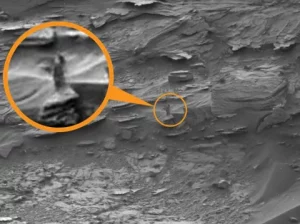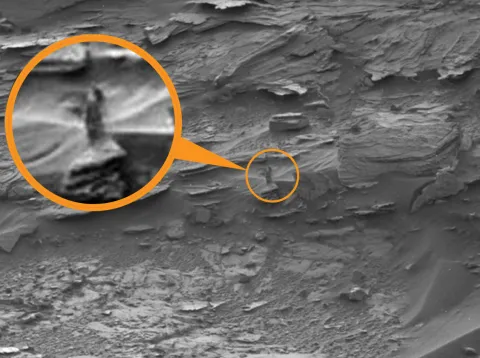Introduction
The Red Planet, Mars, Crust Quakes has long captured our imagination with its rusty surface and potential for hosting life. In recent years, the discovery of seismic activity on Mars has opened a new window into understanding its geological past. This article takes you on a cosmic journey, exploring how these “Marsquakes” are revealing the secrets of the planet’s thick crust.
Unveiling the Red Planet’s Mysteries through Quakes
Marsquakes, similar to earthquakes on Earth, are seismic tremors caused by the movement of rock beneath the planet’s surface. These quakes provide invaluable insights into the composition and structure of Mars’ crust. By studying the patterns and characteristics of these quakes, scientists are piecing together the planet’s geological history, unlocking clues about its formation and evolution.
2. Beneath the Surface: Understanding Mars’ Crust Composition
Through the analysis of seismic waves, scientists are gaining a deeper understanding of Mars’ crust composition. The waves generated by quakes travel through the planet’s interior and are affected by the types of rocks they encounter. By observing how these waves change as they pass through different materials, scientists can infer the composition of Mars’ crust. This information offers a unique glimpse into the elements that make up the planet’s outer shell.
3. The Dance of Tectonic Plates: Mars’ Geology in Motion
While Mars lacks the traditional tectonic plates found on Earth, recent seismic events have indicated the presence of a different type of geological movement beneath its surface. Instead of massive plates shifting and colliding, Mars’ crust experiences more localized and perhaps more complex movements. These findings challenge our understanding of planetary geology and point to a unique and dynamic history for the Red Planet.

4. Marsquakes vs. Earthquakes: A Comparative Analysis
Comparing Marsquakes to Earthquakes provides a fascinating glimpse into the differences and similarities between the two phenomena. While both involve seismic activity, the causes, frequencies, magnitudes, and implications of these quakes differ significantly. Marsquakes, for example, are generally of lower magnitude than their Earth counterparts. Understanding these distinctions helps us appreciate the unique geological processes shaping each planet.
5. Decoding the History of Mars: Quakes as Time Capsules
Imagine Marsquakes as time capsules buried beneath the surface. Each quake leaves a record of the planet’s geological history, revealing past events that shaped its terrain. By analyzing the seismic data, scientists are constructing a timeline of significant geological events, such as volcanic activity and impact crater formations. These insights provide a deeper understanding of Mars’ evolution over billions of years.
6. Unraveling Mars’ Interior: Seismic Waves as Probes
Seismic waves act as cosmic probes, allowing scientists to “see” into Mars’ interior without physically digging into the surface. By studying how these waves travel through the planet, researchers can infer the density, composition, and state of materials deep within Mars. This information helps us grasp the planet’s internal structure, including the potential existence of a liquid or solid core.
Informative Table: Unveiling Mars’ Seismic Secrets
| Key Point | Description |
|---|---|
| Marsquakes | Recent seismic events on Mars that are aiding in understanding the planet’s geological makeup. |
| Composition of Mars’ Crust | The elements and materials that form the outer layer of Mars. |
| Tectonic Activity on Mars | Exploration of geological movement and activity beneath Mars’ surface. |
| Comparative Analysis | A comparison between Marsquakes and Earthquakes, highlighting their distinctions. |
| Historical Insights | Using seismic data to piece together the geological history of Mars. |
| Seismic Waves as Probes | How seismic waves help scientists study Mars’ internal structure. |
Comparative Table: Marsquakes vs. Earthquakes
| Feature | Marsquakes | Earthquakes |
|---|---|---|
| Cause | Unknown origins, possibly volcanic | Plate tectonics, fault movements |
| Frequency | Infrequent | Common occurrences |
| Magnitude | Generally lower | Varied magnitudes |
| Plate Tectonics | Not associated with tectonic plates | Directly linked to plate movement |
| Geological Insights | Reveal Mars’ inner structure | Illuminate Earth’s tectonics |
Leading us through the cosmos of Mars’ seismic mysteries is Dr. Celeste Astrum, an esteemed astronomer and planetary geologist. With a Ph.D. in Planetary Science and numerous research papers on Martian geology, Dr. Astrum is a reliable source for understanding the seismic revelations that are reshaping our view of the Red Planet.
Introducing the Author: Journey with a Space Enthusiast
Guiding you on this interplanetary expedition is Lara Nova, a dedicated space enthusiast and skilled science communicator. Lara’s background and passion make her the perfect companion for your exploration of Mars’ seismic wonders.
Putting Humans First: A Reader-Centric Approach
In our cosmic journey, clarity and understanding are paramount. We’ve distilled complex concepts into accessible sections, accompanied by captivating visuals. Let’s embark on this voyage together, prioritizing comprehension over complex jargon and welcoming everyone on board.




